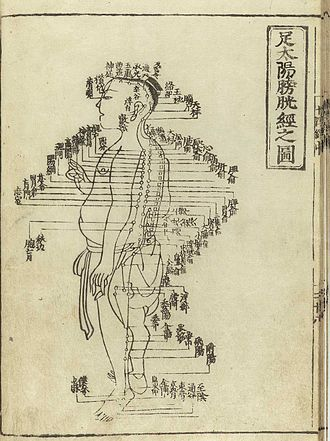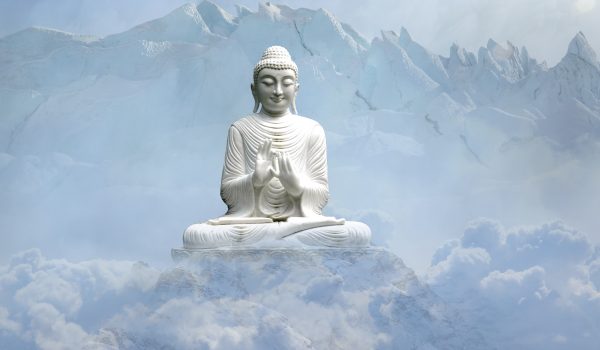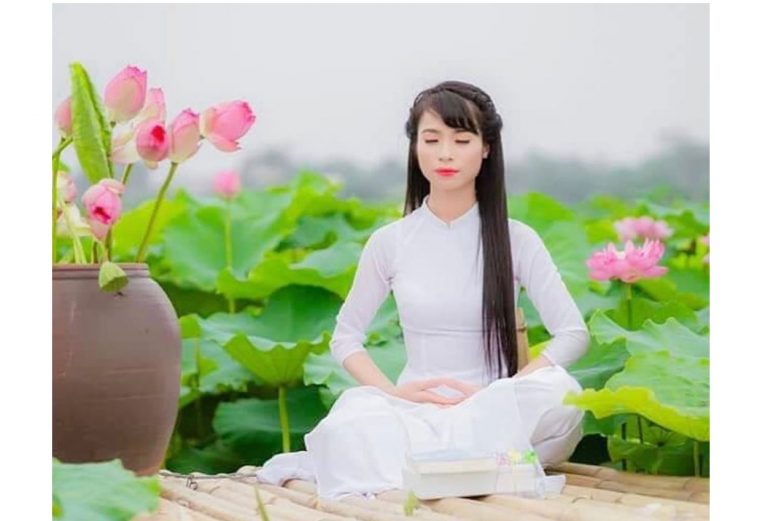The lotus position is a preferred method of sitting in meditation. Though physically daunting for some, it can be done by almost anyone with perseverance. Apart from deepening one’s meditative trance, the full lotus position with both legs crossed atop each other can bring amazing health benefits, according to the principles taught in traditional Chinese medicine (TCM).
It is said that illness occurs when one’s meridians are blocked, which inhibits the proper flow of qi and blood.
Qi (氣) and meridians (經絡) are terms used in TCM to convey concepts that are not present in Western medicine. Even the term blood (血) is understood differently, with deeper connotations than those gleaned from modern empirical methods.
Opening the meridians and improving essence
In TCM, “blood” carries an essence (精) that is composed of microscopic substances, which supplies important nutrients throughout the body. A stronger essence brings better skin and complexion, while deficiency of essence leads to a weak and sallow appearance.
Apart from strengthening the hips and spine, the lotus position opens up the meridians and blood vessels in the legs. When sitting cross-legged in a full lotus position, the ankle presses the aorta on the inner thigh. The heart will pump harder to get the blood to flow through the artery.
Success
You are now signed up for our newsletter
Success
Check your email to complete sign up
Before passing the artery, the blood concentrates in the upper body since the arteries of the legs are blocked. As the heart pumps harder, the internal organs receive significant blood supply, resulting in improved function of the internal organs and increased blood flow to the brain.
Qi, the vital energy in the human body, serves a function comparable to how the sun provides the initial energy to fuel the basic functions on Earth. Qi enables people to thrive and grow. Deficiency of qi leads to lack of energy.
Blood carries qi. A deficiency in the blood, or a lack of this nutritional essence, will lead to a qi deficiency, and vice versa.
Meridians refer to the energy channels that are invisible to the human eye, but which move qi and blood throughout the body. TCM describes 14 main meridians, a comprehensive system with two main meridians (任 ren, and 督 du), plus 12 more, including three yin meridians on the front of the body and three yang meridians on the back, as well on the left and right sides and from hand to foot.

Simply put, meridians are a network upon which the whole body relies for its health. If the meridians are blocked, a person will suffer from various diseases. Sometimes, one may feel unwell with no apparent symptoms. In this situation, a practitioner of traditional Chinese medicine may well diagnose the patient as having his or her meridians blocked, and administer an appropriate treatment after ascertaining the cause of blockage.
When sitting in a chair, some people like to cross their legs one atop the other. Traditional Chinese medicine does not consider that beneficial. Instead of crossing your legs the conventional way, it would be better to practice sitting in the cross-legged lotus position.
Working up to the full lotus position
Despite frequent difficulty at the beginning, it is possible for nearly everyone to master the cross-legged lotus position, even the elderly.
To prepare for sitting in the cross-legged lotus position, you can start by doing some stretching exercises to loosen the muscles in your groin, then lift one leg over the other. Different spiritual practices abide by different rules for which foot goes up first. The theory of yin and yang holds that left is yang and right is yin. As yang embodies the masculine principle and yin the feminine, men should put up the left leg first; vice versa for women.
You might not be able to do it on your first try, and it may be quite painful even if you can do it. If you are persistent you will be able to get into the position. Try to bear the pain as much as possible before taking the legs down. As time goes by, you will gradually be able to sit for a longer period.

After beginning to practice the full lotus position, some may experience an increase in leg and back pain; sometimes the discomfort continues even when one is not sitting in the position. This is a natural consequence of opening the meridians, and should not be mistaken for injury. As you persist in the practice (even 20 minutes a day is beneficial), the pain will gradually lessen. You may feel a strong current of qi, straightening your spine and improving your posture.
Practicing sitting in a full lotus position can also enhance gastrointestinal movement and aid in digestion.
Daily meditation in full lotus position allows you to build strength in your waist and legs, improve circulation in the legs, and relieve sciatica due to a sedentary lifestyle. When you are stressed out at work and can’t think clearly, just sit cross-legged in meditation. The increased blood flow to the brain will help you feel energized and clear headed.
This position can also improve women’s menstruation cycle by relieving menstrual pain and regulating menstrual flow. When menstruation is regulated, endocrine disorders will also be resolved. The full lotus sitting position benefits women’s bodies in many ways. Busy mothers laden young children and household chores can relieve all-too-common back pain and prevent spinal disorders by sitting in the cross-legged pose.
For men, sitting in a cross-legged lotus position every day before going to bed strengthens the muscles and bones, opens up the meridians, helps to improve the function of internal organs, stimulates the circulation of the physiological system, and safeguards the health of the kidneys and prostate. While it may seem a chore at first, the long-term benefits of the lotus position far outweigh the temporary discomfort.












